Though doubtless one of the most important artists of pre-Renaissance German painting in Upper Swabia, the Master of Messkirch is also one of the most mysterious.
Possibly born in about 1490-95, he was most likely active in the period 1515-40. Judging by the surviving works, he was principally employed by the Barons and Earls von Zimmern in Messkirch, who sympathized with the Catholic reigning House of Habsburg. It is from their legacy, which passed to the von Fürstenberg family after the death of the last male heir in 1594, that most of the 100 surviving panels now distributed among the world's great collections originated.
The religious themes of the Master of Messkirch's art were clearly shaped by the desires and demands of its noble Catholic patrons. His name also derives from the program of the altarpieces he executed for the former parish church of St. Martin in Messkirch. In terms of style, the oeuvre of our great unknown artist was obviously influenced by Albrecht Dürer and his assistants Hans Baldung Grien, Hans Schäufelein, and Hans von Kulmbach. In other words, his eye was no longer turned exclusively to the northwest, to the Netherlands, but additionally oriented itself to the visual language south of the Alps. Capable of combining late-Gothic forms with Renaissance-like compositional principles, the Master of Messkirch arrived at highly original versions of soulful figures – some of them suffused with ironic wit. Tied into the picture plane, their earthbound, stocky bodies seem firmly anchored in this world. Their occasionally iridescent garments, gowns, jackets, cowls and veils encompass them in ample, decorative billows as if blown by the wind. Yet in other scenes, the garments hang motionlessly on the figures like frozen cascades.
Yet the Master of Messkirch was not only a precise observer of the human physiognomy and characteristics of textiles; he was also an excellent portrayer of river and mountain landscapes, even small excerpts of which possess a fairytale charm. His fine sense of color enabled the use of a broad palette of light to saturated tones, and, in contrast, brilliant, almost enamel-like hues that lend even the most dramatic subjects the character of radiant, well-nigh cheerful festiveness.
Since the acquisition of the corpus of the Falkenstein Altarpiece, one of the master's major works, the Würth Collection has been presenting its entire stock of seventeen panels by him at the Johanniterkirche in Schwäbisch Hall. The highlight of the presentation is the reunion of the "Falkenstein Altarpiece" (1530), created for Falkenstein Castle of the Barons von Zimmern and divided into its separate parts and dispersed in the 19th century. Two of the panels in the Schwäbisch Hall exhibition have belonged to the Staatsgalerie Stuttgart since 1929.

Master of Messkirch, The Falkenstein Altarpiece, Left fixed wing: St. Christopher, Würth Collection, Inv. 15605/3
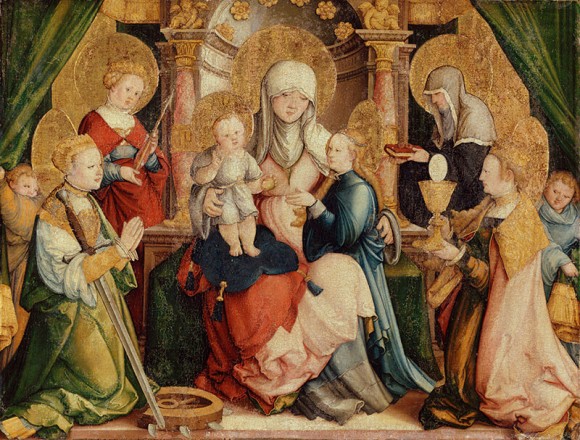
Master of Messkirch, The Falkenstein Altarpiece, After 1530, Middle panel, The Virgin, Child and St. Anne in the Midst of Holy Women, Coniferous wood, 51 x 61 cm, Würth Collection, Inv. 15605/3
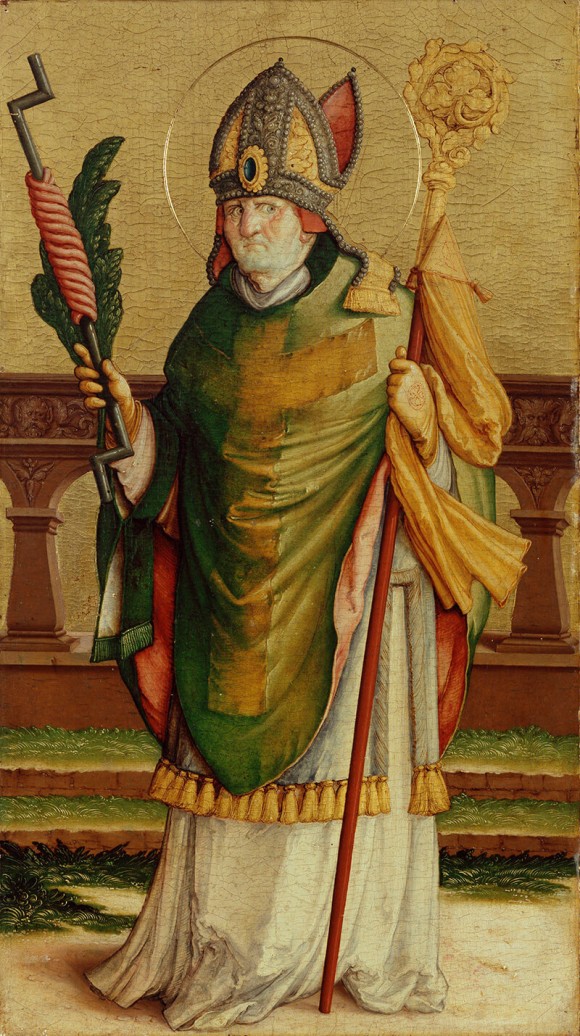
Master of Messkirch, The Falkenstein Altarpiece, Right movable wing, Interior panel: St. Erasmus, Würth Collection, Inv. 15605/3
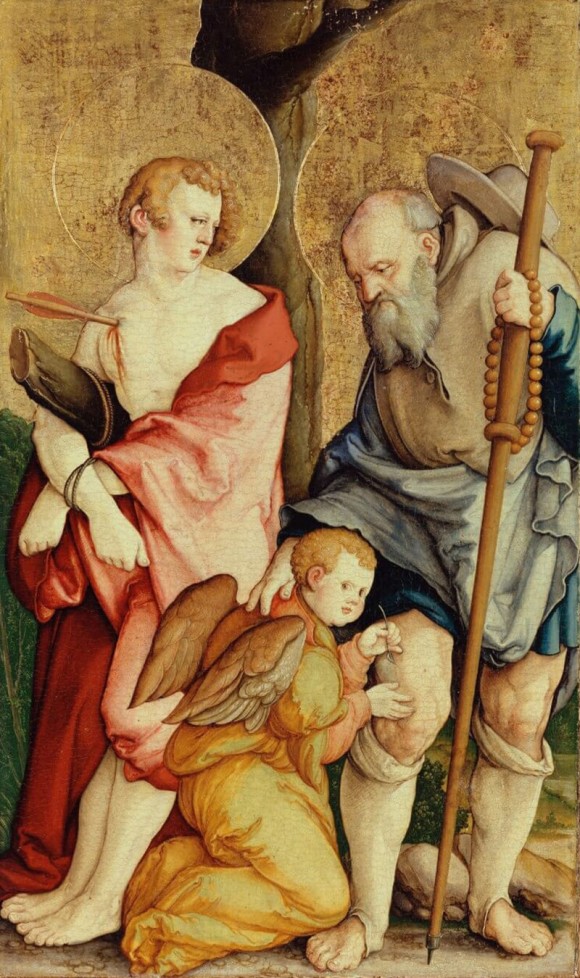
Master of Messkirch, The Falkenstein Altarpiece, Right fixed wing: St. Sebastian and St. Rochus, Würth Collection, Inv. 15605/3
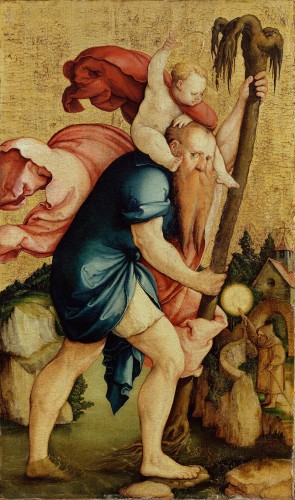
Master of Messkirch, The Falkenstein Altarpiece, Left fixed wing: St. Christopher, Würth Collection, Inv. 15605/3
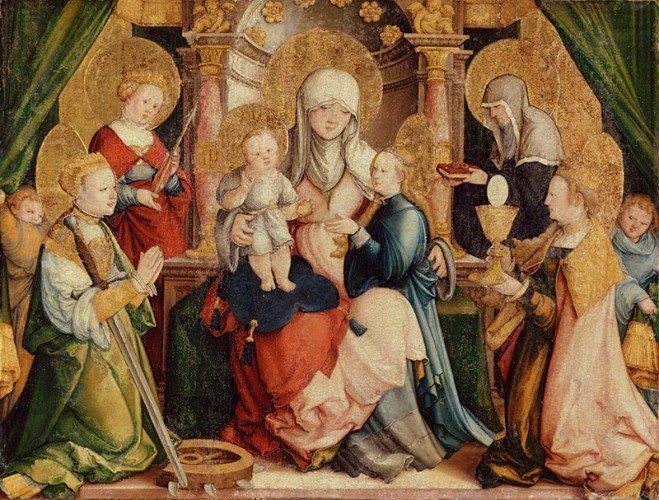
Master of Messkirch, The Falkenstein Altarpiece, After 1530, Middle panel, The Virgin, Child and St. Anne in the Midst of Holy Women, Coniferous wood, 51 x 61 cm, Würth Collection, Inv. 15605/3
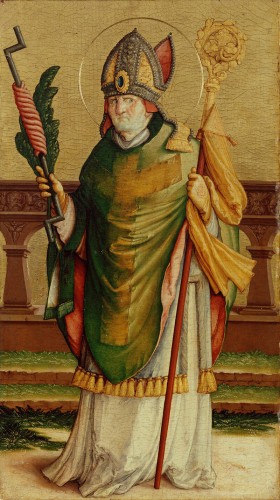
Master of Messkirch, The Falkenstein Altarpiece, Right movable wing, Interior panel: St. Erasmus, Würth Collection, Inv. 15605/3
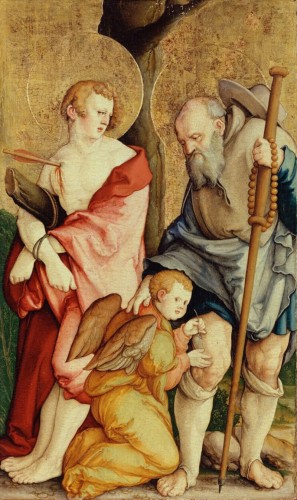
Master of Messkirch, The Falkenstein Altarpiece, Right fixed wing: St. Sebastian and St. Rochus, Würth Collection, Inv. 15605/3